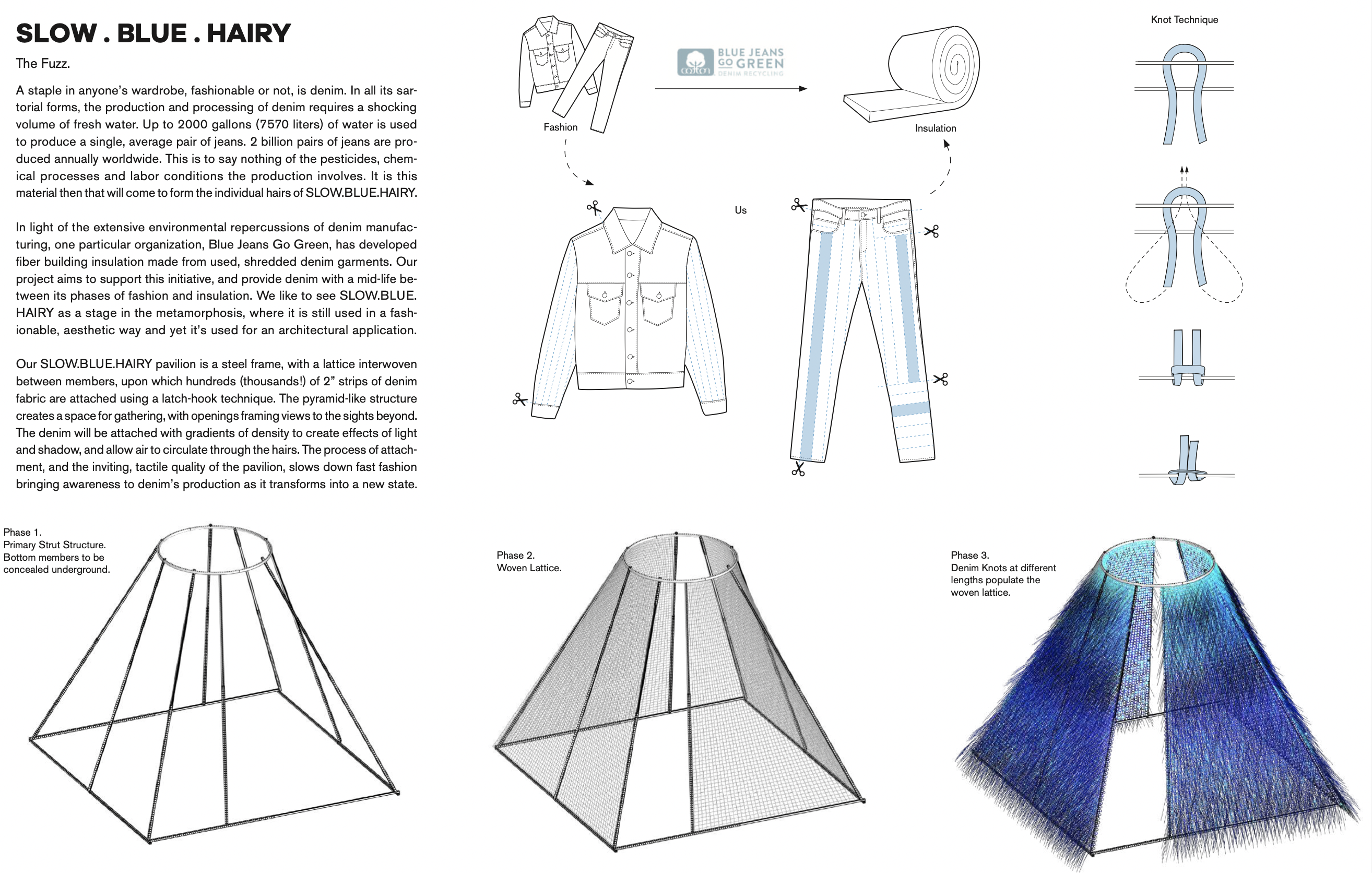Slow. Blue. Hairy.
2020, In Collaboration with Layan Barakat
Fast fashion, made slow.
Our City of Dreams, or the city of our dreams is slow, blue and hairy. Literally. It is slow, in terms of production process and use, providing contemplative, meditative respite in both instances. It is blue, in order to be green, sustainable and raise awareness of fresh water usage and contamination. And it is hairy, thousands of individual hairs waiting for you to run your fingers through, a tactile invitation. In the current battle against global warming and climate change one of the most notorious contributing industries is fast fashion. Fast fashion is the rapid production, consumption and disposal of clothing produced cheaply for the mass market. These mass-produced garments often compromise quality, workmanship and sustainability, encouraging a throw-away attitude where people can afford to be wasteful. Fast fashion garments are ephemeral, and the fast fashion industry, ubiquitous. These products have high embodied energy and environmental impact through the process of fiber production, clothing production and processing, use, and as post-use waste. It is reported that around 13 million tons of clothing ends up in landfills each year. Furthermore, less than 1% of material used to produce clothing is recycled, representing a loss of more than $100 billion dollars worth of materials each year. To us, this appears as a ripe opportunity to explore.
A staple in anyone’s wardrobe, fashionable or not, is denim. In all its sartorial forms, the production and processing of denim requires a shocking volume of fresh water. Up to 2000 gallons (7570 liters) of water is used to produce a single, average pair of jeans. 2 billion pairs of jeans are produced annually worldwide. This is to say nothing of the pesticides, chemical processes and labor conditions the production involves. It is this material then that will come to form the individual hairs of SLOW.BLUE.HAIRY. In light of the extensive environmental repercussions of denim manufacturing, one particular organization, Blue Jeans Go Green, has developed fiber building insulation made from used, shredded denim garments. Our project aims to support this initiative, and provide denim with a mid-life between its phases of fashion and insulation. We like to see SLOW.BLUE.HAIRY as a stage in the metamorphosis, where it is still used in a fashionable, aesthetic way and yet it’s used for an architectural application.
Our SLOW.BLUE.HAIRY pavilion is a steel frame, with a lattice interwoven between members, upon which hundreds (thousands!) of strips of denim fabric are attached using a latch-hook technique. The pyramid-like structure creates a space for gathering, with openings framing views to the sights beyond. The denim will be attached with gradients of density to create effects of light and shadow, and allow air to circulate through the hairs. The process of attachment, and the inviting, tactile quality of the pavilion, slows down fast fashion bringing awareness to denim’s production as it transforms into a new state.
Sources:
Ellen MacArthur Foundation. A New Textiles Economy: Redesigning Fashion's Future. 2017. https://www.ellenmacarthurfoundation.org/assets/downloads/publications/A-New-Textiles-Economy_Full-Report.pdf.
Hussein, Haisam. "Your Jeans Are Ruining the Earth." Vice. Last modified September 25, 2017. https://www.vice.com/en_us/article/kzzpjm/your-jeans-are-ruining-the-earth-v24n7.

